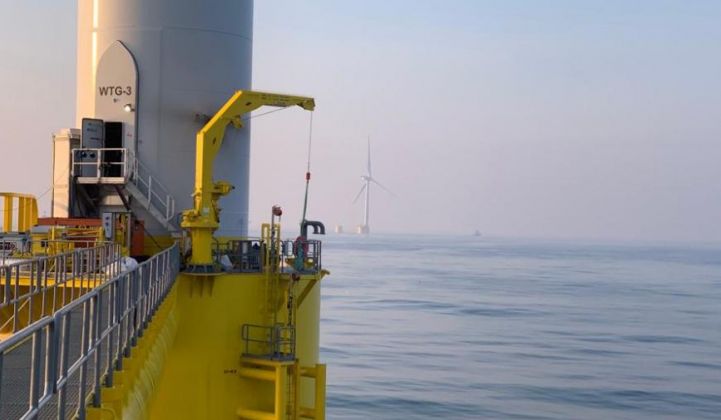The U.K. government has proposed a special carve-out for floating wind in its contracts for difference support system — potentially a big catalyst for a technology that major developers are beginning to take more seriously.
Earlier this week the government in London launched a review of the contracts for difference (CFD) program, the country's main support system for renewables. The review proposed a number of significant changes, including reopening CFD auctions for onshore wind and solar.
The government also suggested that the U.K. may need floating wind to come of age sooner than many currently expect, as the country races toward its 40-gigawatt offshore wind target for 2030.
Although fixed-bottom turbines could meet all of the U.K.'s offshore wind needs, environmental risks and conflicts with aviation and shipping could change the equation as the country moves beyond its current 8.5 gigawatts of installed capacity.
“Should such risks materialize, it is likely that the commercial deployment of floating offshore wind will be needed sooner than previously anticipated and at greater levels, particularly during the 2030s,” the consultation document states.
In the U.K.'s first three CFD auctions, the funding was split into two pots: one for established technologies and one for emerging “less established” technologies like offshore wind.
But the U.K. is considering a number of major changes to the program, with the next auction set for 2021. Among its latest proposals is the addition of floating offshore wind to the emerging technology stream, or perhaps putting standard offshore wind into its own third lane of funding — clearing the way for other, still-more-expensive technologies.
“Separating offshore wind into a third pot allows more potential for other technologies to successfully compete in the next CFD allocation round, subject to auction prices,” the document says.
Offshore wind dominated the U.K.'s last CFD round, taking home 5,466 of the 5,775 megawatts awarded last September.
Winning projects out of the next CFD round will likely be completed between 2025-2027. Kimon Argyriadis, director of floating wind at DNV GL Energy, told GTM that projects on the scale of hundreds of megawatts could be fulfilled in that time frame.
“Under the right conditions, it would be possible to realize floating wind projects of that order by 2026/27, using existing supply chains from the maritime and oil and gas industry, as well as simultaneously establishing new industrialized infrastructure dedicated specifically to the floating wind sector,” Argyriadis wrote in an email.
EDPR, Equinor on board
A number of major players in the energy world have begun taking floating offshore wind very seriously.
Last year EDPR launched an offshore wind joint venture with Engie, with a partial focus on floating projects.
“I believe that offshore floating [wind] is more and more important," João Manuel Manso Neto, EDPR's CEO, said on a recent earnings call.
“Today, it is still expensive. But my view is that it can also be a factor for differentiation. You have to find places where the competition is not only on price, and we believe that with this partnership with Engie, we will be able to do it,” added Neto.
The largest operational floating system today is Equinor’s 30-megawatt Hywind Scotland project, set to be eclipsed by ACS Group’s 50-megawatt Kincardine project, also off Scotland. Equinor recently made its final investment decision on the 88-megawatt Hywind Tampen, to be sited off Norway.
Equinor’s head of floating wind development Sebastian Bringsværd recently told GTM that the technology is seeing faster progress than fixed offshore wind did at a similar point in its development.
Bringsværd said a floating wind tender in the U.K. would be of interest to Equinor. “The U.K. is a core market for us. So if there is any opportunity to do floating wind there, we will be very interested and we will follow this very closely,” he said.




